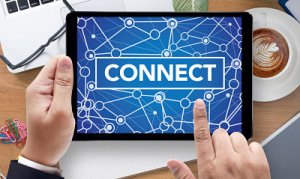|
|
 Last week we talked about these facts in terms of mobile technology in our world today:
Last week we talked about these facts in terms of mobile technology in our world today:
- 95% of all text messages are read and read within 90 seconds of receipt
- 65% of all email is opened on a mobile device versus a desktop or laptop
- Mobile is now the first screen worldwide – eclipsing screen time on both PCs and TVs
- There are more mobile devices on the planet than there are people
Our new marketing reality is that consumers are now of the “I want what I want when I want it” attitude and we need to be able to connect with them at that level. Mobile was a major factor in creating this new marketplace and it will be a major factor for us as we work to stay relevant and viable to the audiences that matter to us.
Smart marketers will recognize that this is not about technology. It’s about an evolution in our behavior as the world around us changes the rules of the game.
I promised you some examples of how businesses are using mobile to make connections and want to deliver on that this week. Let’s look at a few:
Delivering time sensitive and/or location specific content to your target market
The truth is, people want to hear from brands when they need something. No one is sitting around, hoping to hear from you just because. So why not let them connect, telling you what and when they want to hear from you?
Example #1: QR codes done right. One of my favorite examples of this is how Robitussin does this. In pharmacies right by the huge wall of cough medicines, you can scan a QR code and you’re taken to a mobile website to diagnose exactly which version of their cough medicine is right for you and your family.
Just answer a few questions about your symptoms and voila, they will tell you exactly which of the bazillion versions is the best fit.
QR codes are like the redheaded stepchild of marketing technology because our industry has used them so foolishly without thinking about the audience experience. But Robitussin got it right. It’s actually helpful and using the technology for the right reasons.
Example #2: Geofencing. This is a feature in a software program that uses the global positioning system (GPS) or radio frequency identification (RFID) to define geographical boundaries. Think of it as a virtual barrier.
A great example of this is the Wal-Mart app. When you’re within a certain radius of a Wal-Mart, your phone will push special coupons, price decreases etc. your way. Not as big as Wal-Mart? Imagine being a locally owned chocolate shop with rabid fans. As they near your location, you could push out the flavor you’re sampling that day or your buy a pound of fudge, get a pound free special.
Example #3: Beacons. Beacons are a low-cost piece of hardware that is small enough to attach to a wall or countertop that use Bluetooth connections to transmit messages or prompts to a smartphone or tablet. They are beginning to transform how retailers, event organizers, transit systems, enterprises, and educational institutions communicate with people within a contained space (think exhibit hall, airport, retail location).
Virgin Airlines uses beacon technology at Heathrow airport to connect to their premium fliers with special offers for things like commission-free currency exchanges and directions to a private security screening area.
Apple Stores use them as well – sending notices about in-store events and helping customers expedite their shopping experience.
Next week we’ll explore how brands are using mobile to solve problems that are buying obstacles for their customers.
